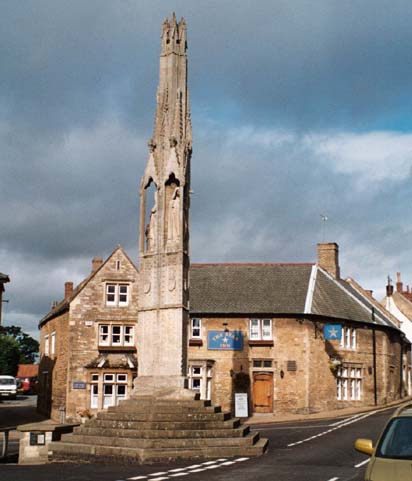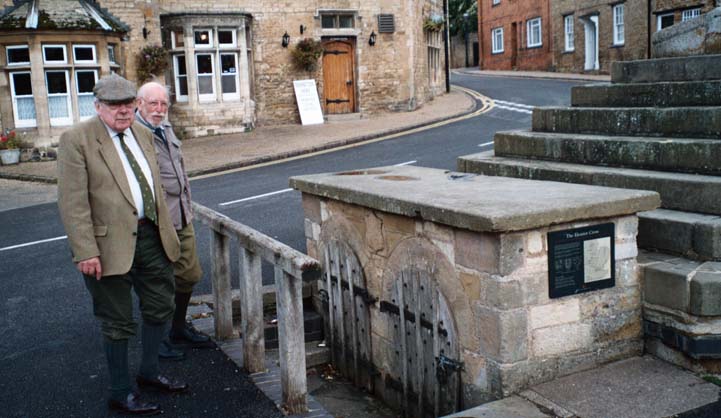|
| |
M O N U M E N T S
 |
ELEANOR CROSS (Geddington)
-
This is one of the
Eleanor Crosses which is the best preserved in
England. This was erected in memory of Eleanor
of Castile (wife of King Edward I of England).
She died of a fever while she
was accompanying her husband on a war against
the Scots in 1290.
Her early death robbed
him of his happiness. He brought her body to
Westminster, erecting at each nights resting
place a monument. Her tomb is
alongside her husband's in Westminster Abbey. |
 |
The lock-up at
the base of the cross, where the village
drunks and delinquents were kept
overnight to teach them a lesson.
David's friends Roy and Tony are
deciding who they ought to put in it. |
The twelve crosses were
erected at Lincoln, Grantham, Stamford,
Geddington, Hardingstone, Stony Stratford,
Woburn, Dunstable, St Albans, Waltham, Cheapside
and Charing. Only three (Geddington,
Hardingstone and Waltham) survive, though there
is a replica at Charing Cross, now a London
railway station.
|
|
|

| The main
stone circle, about 35 yards in diameter,
consists of 77 stones. It has been dated to
approximately 2,500 BC. The circle stands on an
ancient track way along the top of a ridge (this
picture shows the view to the South). It is an
ancient religious site. There are many,
unprovable, theories about its exact function.
It is certain though that there is an aura about
the place that gives one gooseflesh, even in
broad daylight. Legends of witches in local
villages might just be opportunism - how many
bored villagers would pass up the opportunity to
make use of a place like this on their doorstep? |
|
|
 |
| Many of the stones in
the circle are extremely weathered. A large
number of them had fallen down and become
buried, but were replaced in (allegedly)
their original positions in the
1880s. |
|

The King Stone is seriously
weathered, but this is not the only reason for its
peculiar shape. Legend has it that this stone was
credited with the power to repel the devil. Bits were
therefore chipped off it for people to use as charms.
The superstition, and therefore the vandalism, died out
about 100 years ago
|
The Rollright Stones
are a collection of prehistoric dolmen set in the depths
of the countryside on the border between Oxfordshire and
Warwickshire. They comprise three clusters; the king
stone (illustrated here) is a single stone lying about
50 yards north of the main stone circle. It is thought
to have been erected in the Bronze Age, about 5,000
years ago. |
|
 |
This rather small monument
marks what might have been one of the most important
battles in English history. At Stamford Bridge in
1066, the new King, Harold Godwinson, defeated an
invasion by the toughest warlord of the age, Harald
Hardraada, who was aided by Harold's younger brother
Tostig. The victory would have marked the start of a
golden age for Saxon Britain, were it not for
William the Conqueror invading from Normandy almost
immediately afterwards. Harold marched his army the
200 miles South to meet William at Hastings. But
after Stamford Bridge and the long march they were
knackered, so William won (only just). This monument
at Stamford Bridge is now almost forgotten,
overshadowed by its more famous successor. |
|
| |
 |
Most British towns and villages have a war memorial,
commemorating the people from the town or village who died in
the two World Wars to save Britain from being subjugated to a
foreign tyranny. The memorial in York is a particularly fine
example.
It is sad to reflect that, after all the trouble
and sacrifice of two gruelling world wars, Britain today is
groaning under the oppressive yoke of petty bureaucracy and
mindless over-regulation from its own government.
|
|





|